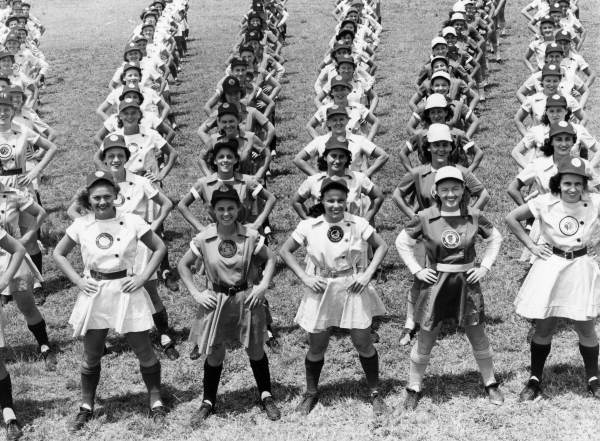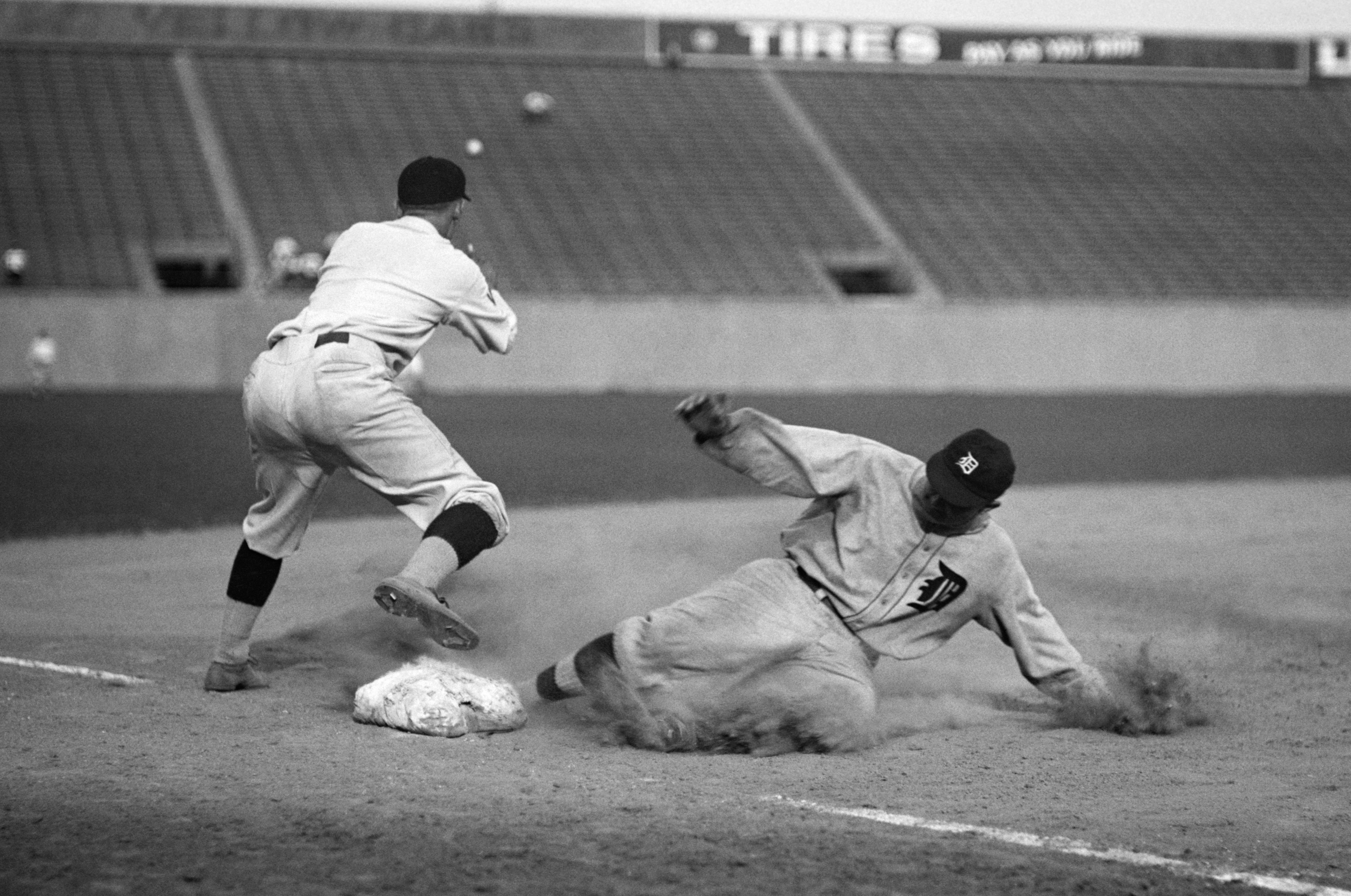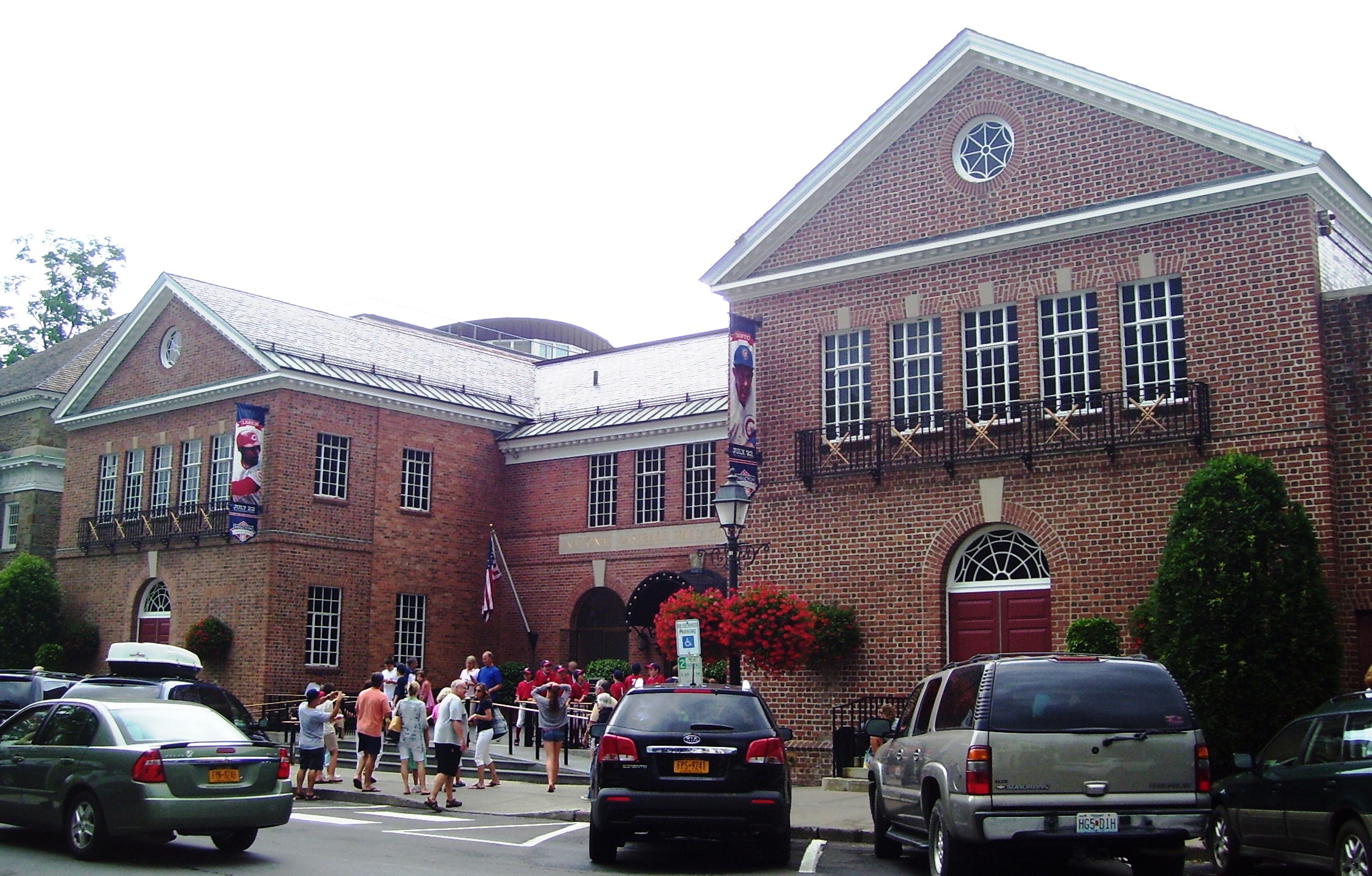|
Martha Rommelaere
Martha Rommelaere ''Manning(August 30, 1922 – May 28, 2011) was a Canadian outfielder who played in the All-American Girls Professional Baseball League during the season. Listed at 5'4", 120 lb., she batted and threw right handed. Born in Deloraine, Manitoba, Martha Rommelaere was one of the 57 players born in Canada to join the All-American Girls Professional Baseball League in its twelve years history. However, her career in the circuit was cut short due to a severe back injury. Rommelaere grew up on a farm near LaFleche, and moved to Moose Jaw, Saskatchewan at seventeen. She began to play sandlot ball with the boys of her neighborhood when she was a little girl, and became a track and field star in high school who could outrun any girl in Saskatchewan. ''I could run like a deer'', she explained in an interview.The Women of the All-American Girls Professional Baseball League Softball At age 22, Rommelaere joined the Moose Jaw Royals softball team. She was mis ... [...More Info...] [...Related Items...] OR: [Wikipedia] [Google] [Baidu] |
All-American Girls Professional Baseball League
The All-American Girls Professional Baseball League (AAGPBL) was a professional women's baseball league founded by Philip K. Wrigley which existed from 1943 to 1954. The AAGPBL is the forerunner of women's professional league sports in the United States. Over 600 women played in the league, which consisted of eventually 10 teams located in the American Midwest. In 1948, league attendance peaked at over 900,000 spectators. The most successful team, the Rockford Peaches, won a league-best four championships. The 1992 film ''A League of Their Own'' is a mostly fictionalized account of the early days of the league and its stars. Founding and play With the entry of the United States into World War II, several major league baseball executives started a new professional league with women players in order to maintain baseball in the public eye while the majority of able men were away. The founders included Philip K. Wrigley, Branch Rickey, and Paul V. Harper. They feared that Ma ... [...More Info...] [...Related Items...] OR: [Wikipedia] [Google] [Baidu] |
Infielder
An infielder is a baseball player stationed at one of four defensive "infield" positions on the baseball field. Standard arrangement of positions In a game of baseball, two teams of nine players take turns playing offensive and defensive roles. Although there are many rules to baseball, in general the team playing offense tries to score runs by batting balls into the field that enable runners to make a complete circuit of the four bases. The team playing in the field tries to prevent runs by catching the ball before it hits the ground, by tagging runners with the ball while they are not touching a base, or by throwing the ball to first base before the batter who hit the ball can run from home plate to first base. There are nine defensive positions on a baseball field. The part of the baseball field closest to the batter (shown in the diagram as light brown) is known as the "infield" (as opposed to the "outfield", the part of the field furthest from the batter, shown in the diagr ... [...More Info...] [...Related Items...] OR: [Wikipedia] [Google] [Baidu] |
Stolen Base
In baseball, a stolen base occurs when a runner advances to a base to which they are not entitled and the official scorer rules that the advance should be credited to the action of the runner. The umpires determine whether the runner is safe or out at the next base, but the official scorer rules on the question of credit or blame for the advance under Rule 10 (Rules of Scoring) of the MLB's Official Rules. A stolen base most often occurs when a base runner advances to the next base while the pitcher is pitching the ball to home plate. Successful base stealers are not only fast but have good base-running instincts and timing. Background Ned Cuthbert, playing for the Philadelphia Keystones in either 1863 or 1865, was the first player to steal a base in a baseball game, although the term ''stolen base'' was not used until 1870. For a time in the 19th century, stolen bases were credited when a baserunner reached an extra base on a base hit from another player. For example, if a ru ... [...More Info...] [...Related Items...] OR: [Wikipedia] [Google] [Baidu] |
Run Batted In
A run batted in (RBI; plural RBIs ) is a statistic in baseball and softball that credits a batter for making a play that allows a run to be scored (except in certain situations such as when an error is made on the play). For example, if the batter bats a base hit which allows a teammate on a higher base to reach home and so score a run, then the batter gets credited with an RBI. Before the 1920 Major League Baseball season, runs batted in were not an official baseball statistic. Nevertheless, the RBI statistic was tabulated—unofficially—from 1907 through 1919 by baseball writer Ernie Lanigan, according to the Society for American Baseball Research. Common nicknames for an RBI include "ribby" (or "ribbie"), "rib", and "ribeye". The plural of "RBI" is a matter of "(very) minor controversy" for baseball fans:; it is usually "RBIs", in accordance with the usual practice for pluralizing initialisms in English; however, some sources use "RBI" as the plural, on the basis that i ... [...More Info...] [...Related Items...] OR: [Wikipedia] [Google] [Baidu] |
Home Run
In baseball, a home run (abbreviated HR) is scored when the ball is hit in such a way that the batter is able to circle the bases and reach home plate safely in one play without any errors being committed by the defensive team. A home run is usually achieved by hitting the ball over the outfield fence between the foul poles (or hitting either foul pole) without the ball touching the field. Far less common is the "inside-the-park" home run where the batter reaches home safely while the baseball is in play on the field. When a home run is scored, the batter is credited with a hit and a run scored, and a run batted in ( RBI) for each runner that scores, including himself. Likewise, the pitcher is recorded as having given up a hit and a run, with additional runs charged for each runner that scores other than the batter. Home runs are among the most popular aspects of baseball and, as a result, prolific home run hitters are usually the most popular among fans and consequently th ... [...More Info...] [...Related Items...] OR: [Wikipedia] [Google] [Baidu] |
Triple (baseball)
In baseball, a triple is the act of a batter safely reaching third base after hitting the ball, with neither the benefit of a fielder's misplay (see error) nor another runner being put out on a fielder's choice. A triple is sometimes called a "three-bagger" or "three-base hit". For statistical and scorekeeping purposes it is denoted by 3B. Triples have become somewhat rare in Major League Baseball, less common than both the double and the home run. This is because it requires a ball to be hit solidly to a distant part of the field (ordinarily a line drive or fly ball near the foul line closest to right field), or the ball to take an irregular bounce in the outfield, usually against the wall, away from a fielder. It also requires the batter's team to have a good strategic reason for wanting the batter on third base, as a stand-up double is sufficient to put the batter in scoring position and there will often be little strategic advantage to risk being tagged out whilst tr ... [...More Info...] [...Related Items...] OR: [Wikipedia] [Google] [Baidu] |
Double (baseball)
In baseball, a double is the act of a batter striking the pitched ball and safely reaching second base without being called out by the umpire, without the benefit of a fielder's misplay (see error) or another runner being put out on a fielder's choice. A double is a type of hit (the others being the single, triple and home run) and is sometimes called a "two-bagger" or "two-base hit". For statistical and scorekeeping purposes it is denoted by 2B. Description Typically, a double is a well-hit ball into the outfield that finds the "gap" between the center fielder and one of the corner outfielders, bounces off the outfield wall and down into the field of play, or is hit up one of the two foul lines. To hit many doubles, a batter must have decent hitting skill and power; it also helps to run well enough to beat an outfield throw. Doubles typically drive in runs from third base, second base, and even from first base at times. When total bases and slugging percentages are ca ... [...More Info...] [...Related Items...] OR: [Wikipedia] [Google] [Baidu] |
Hit (baseball)
In baseball statistics, a hit (denoted by H), also called a base hit, is credited to a batter when the batter safely reaches or passes first base after hitting the ball into fair territory with neither the benefit of an error nor a fielder's choice. Scoring a hit To achieve a hit, the batter must reach first base before any fielder can either tag him with the ball, throw to another player protecting the base before the batter reaches it, or tag first base while carrying the ball. The hit is scored the moment the batter reaches first base safely; if he is put out while attempting to stretch his hit to a double or triple or home run on the same play, he still gets credit for a hit (according to the last base he reached safely on the play). If a batter reaches first base because of offensive interference by a preceding runner (including if a preceding runner is hit by a batted ball), he is also credited with a hit. Types of hits A hit for one base is called a single, for two ... [...More Info...] [...Related Items...] OR: [Wikipedia] [Google] [Baidu] |
Run (baseball)
In baseball, a run is scored when a player advances around first, second and third base and returns safely to home plate, touching the bases in that order, before three outs are recorded and all obligations to reach base safely on batted balls are met or assured. A player may score by hitting a home run or by any combination of plays that puts him safely "on base" (that is, on first, second, or third) as a runner and subsequently brings him home. Once a player has scored a run, they may not attempt to score another run until their next turn to bat. The object of the game is for a team to score more runs than its opponent. The Official Baseball Rules hold that if the third out of an inning is a force out of a runner advancing to any base then, even if another baserunner crosses home plate before that force out is made, his run does not count. However, if the third out is not a force out, but a tag out, then if that other baserunner crosses home plate before that tag out is made, ... [...More Info...] [...Related Items...] OR: [Wikipedia] [Google] [Baidu] |
At Bat
In baseball, an at bat (AB) or time at bat is a batter's turn batting against a pitcher. An at bat is different from a plate appearance. A batter is credited with a plate appearance regardless of what happens during their turn at bat, but a batter is credited with an at bat only if that plate appearance does not have one of the results enumerated below. While at bats are used to calculate certain statistics, including batting average and slugging percentage, a player can qualify for the season-ending rankings in these categories only if they accumulate 502 plate appearances during the season. Batters will not receive credit for an at bat if their plate appearances end under the following circumstances: * They receive a base on balls (BB).In 1887, Major League Baseball counted bases on balls as hits (and thus as at-bats). The result was high batting averages, including some near .500, and the experiment was abandoned the following season. * They are hit by a pitch (HBP). * They ... [...More Info...] [...Related Items...] OR: [Wikipedia] [Google] [Baidu] |
Games Played
Games played (GP) is a statistic used in team sports to indicate the total number of games in which a player has participated (in any capacity); the statistic is generally applied irrespective of whatever portion of the game is contested. Baseball In baseball, the statistic applies to players, who prior to a game, are included on a starting lineup card or are announced as an ''ex ante'' substitute, whether or not they play. For pitchers only, the statistic games pitched is used. A notable example of the application of the above rule is pitcher Larry Yount, who suffered an injury while throwing warmup pitches after being summoned as a reliever in a Major League Baseball (MLB) game on September 15, 1971. He did not face a batter, but was credited with an appearance because he had been announced as a substitute. Yount never appeared in (or actually played in) any other MLB game. Association football In association football, a game played is counted if a player is in the Starting ... [...More Info...] [...Related Items...] OR: [Wikipedia] [Google] [Baidu] |
Cooperstown, New York
Cooperstown is a village in and county seat of Otsego County, New York, United States. Most of the village lies within the town of Otsego, but some of the eastern part is in the town of Middlefield. Located at the foot of Otsego Lake in the Central New York Region, Cooperstown is approximately southwest of Albany, southeast of Syracuse and northwest of New York City. The population of the village was 1,852 as of the 2010 census. Cooperstown is the home of the National Baseball Hall of Fame and Museum. The Farmers' Museum in the village opened in 1944 on farmland that had once belonged to James Fenimore Cooper. The Fenimore Art Museum and Glimmerglass Opera are also based here. Most of the historic pre-1900s core of the village is included in the Cooperstown Historic District, which was listed on the National Register of Historic Places in 1980; its boundaries were increased in 1997 and more contributing properties were identified. History Native American use Before E ... [...More Info...] [...Related Items...] OR: [Wikipedia] [Google] [Baidu] |

.jpg)





.jpg)
